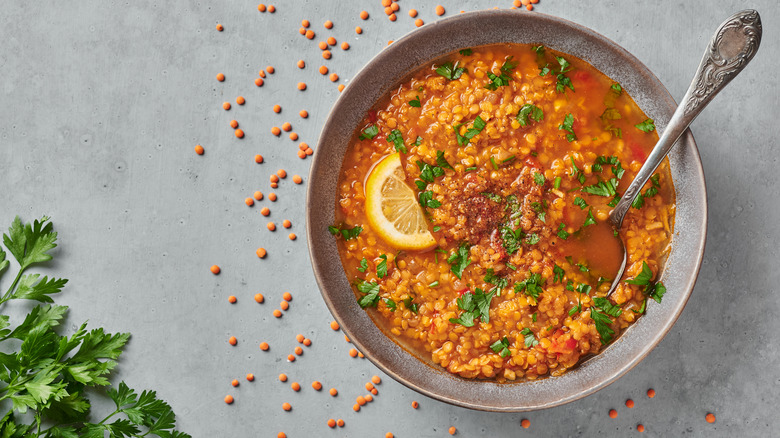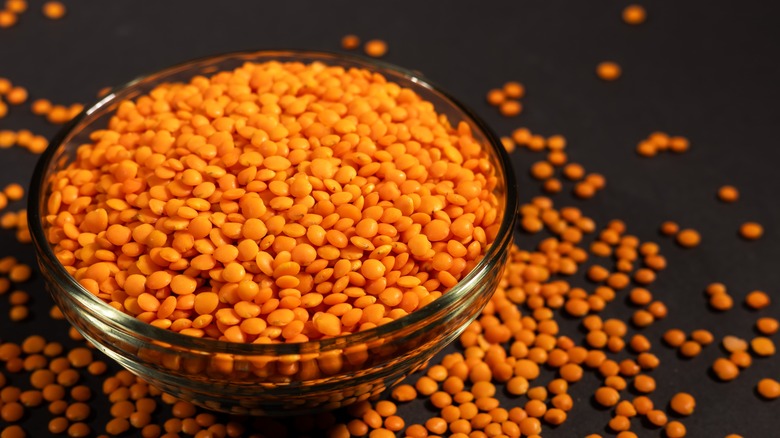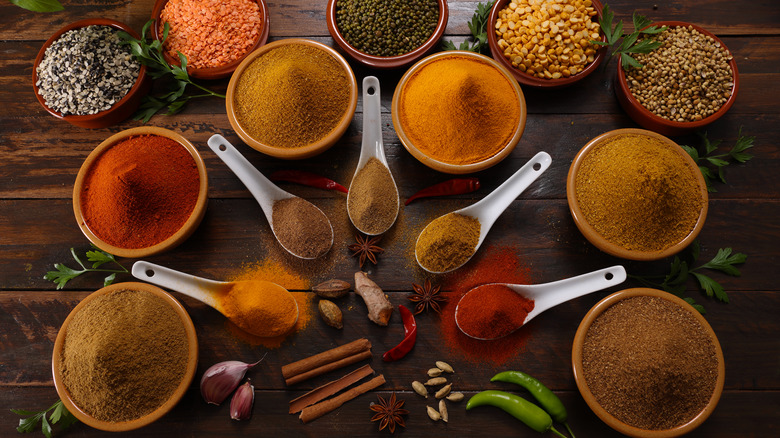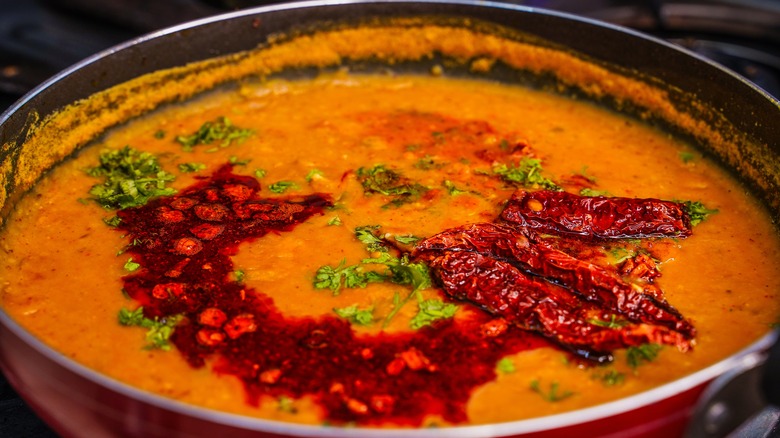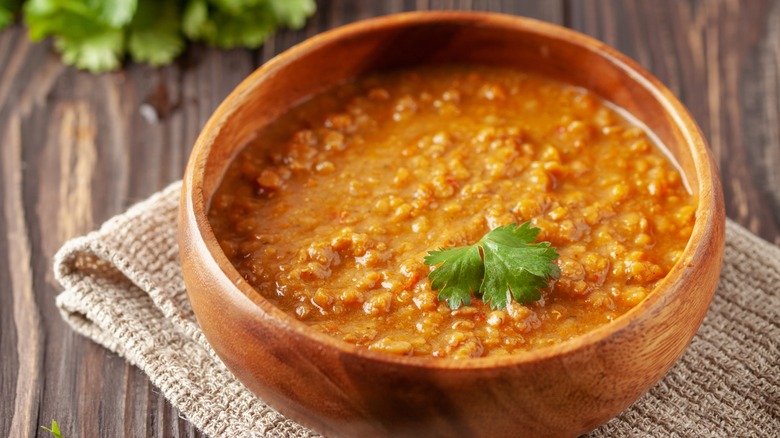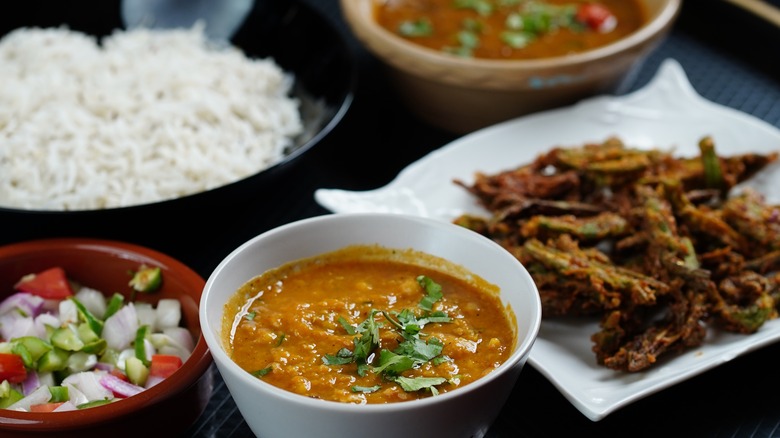5 Expert-Approved Tips For Making Daal At Home
Daal, also spelled dal, dhal, or dahl, is a term used to refer to a variety of pulses, including lentils, beans, and split peas. In Indian cuisine, these ingredients are commonly cooked in liquid and seasonings to make a soft porridge-like mixture. Daal is one of the most simple Indian recipes that you can make, but when prepared properly, it's a delicious and filling meal.
In an exclusive conversation with Chowhound, Chef Varun Inamdar of Rajshri Food shared his top tips for making the perfect daal. As the chef and owner of 27 Degrees West-Singapore, Anokhi Bar & Grill-Shanghai, and New Light Sopore-Kashmir, Inamdar is an expert in the field with years of experience in traditional Indian cuisine. Following these chef-approved hints, you can avoid tough and flavorless daal and transform your typical recipe into a restaurant-worthy dinner.
Check out 10 must-have Indian cookbooks for more classic meals to enjoy after mastering daal.
Properly prepare your lentils
Daal is a broad term used for both dry pulses and the cooked dish. There are different types of lentils that you can choose from depending on the dish you're making and the flavor you want. Varun Inamdar recommends selecting the type of daal based on the cooking time, recipe, and personal preferences. Some of the main varieties you'll see for daal are toor (split pigeon peas), moong (yellow lentils), urad (black lentils), and masoor (red lentils).
Once you've selected your dried lentils, the next essential step is cleaning the lentils to remove any dirt or debris. Run the lentils under cold water and drain them. This removes grime and gives the daal a cleaner taste, according to Inamdar. As a final step to prepare the lentils, the chef recommends soaking them. "Soaking lentils for a few hours can reduce cooking time and improve digestibility," Inamdar said. However, you don't need to soak red lentils, as they cook quickly regardless.
How to season Daal
At its base, daal is a very simple recipe, but it gets amazing flavor from the spices that you add to the recipe. "Add spices like turmeric and salt while cooking, but consider adding salt towards the end to avoid toughening the lentils," Varun Inamdar said. Although salting water is a good way to avoid mistakes while cooking pasta, when it comes to cooking lentils, Inamdar warns that it can toughen the legumes.
He also suggested adding more spices like cumin, coriander, and garam masala according to your taste. After cooking, you can continue to add flavors by garnishing with fresh, bold ingredients. As a finishing touch before serving your homemade daal. Inamdar suggested, "Fresh herbs like cilantro and a squeeze of lemon juice can brighten the dish,"
Prepare Tadka to enhance the flavor
Varun Inamdar recommended preparing tadka for your homemade daal. Tadka is both a method for tempering your spices and the flavorful mixture that's made through the process. It's made by heating a fat with aromatic ingredients such as garlic cloves, herbs, ginger, seeds, and whole spices.
As you cook the ingredients, the fat extracts flavor, creating a rich mixture that you can use to add an extra layer of flavor to recipes. "A good tadka with oil or ghee, garlic, cumin seeds, and dried red chilies adds a flavorful finish," Inamdar said. "Add it at the end for maximum flavor."
How to achieve the right texture
Daal can have a different texture depending on who makes it. While some cooks prefer chunkier dal with mostly whole lentils, others may prefer a thicker mixture with the lentils broken down. According to Inamdar, there's not a right or wrong texture for daal, but you should decide what consistency you like best and prepare your dish to match.
If you prefer a chunky mixture, you can leave the daal whole and serve it after cooking; Inamdar said this gives the recipe a more rustic feeling. But, if you want a creamier texture, you can mash or puree the daal to break down the lentil pieces. If you have an immersion blender, put it right in the pot and blend until it reaches your desired consistency. Or mash by hand with a potato masher or spoon.
Try different ingredient pairings
Daal is a simple and versatile dish that you can prepare in many ways. One of the biggest things we learned from Varun Inamdar is to get creative and experiment. There are so many delicious ingredients that you can add to your daal to transform the flavor and texture of the meal. "Don't be afraid to try different ingredients, like coconut milk, tomatoes, mint, spinach, fenugreek leaves and or seeds, fried onions, bottle gourds, shallots, [and] drumsticks to create unique flavors," Inamdar said.
Once you've prepared the daal with all of the delicious add-ins that you like, he recommends serving it with rice, naan, or roti and finishing the dish with pickles and yogurt for even more amazing flavor and creamy texture. Try making cottage cheese flatbread in the air fryer and use the simple bread to scoop up flavorful daal.
